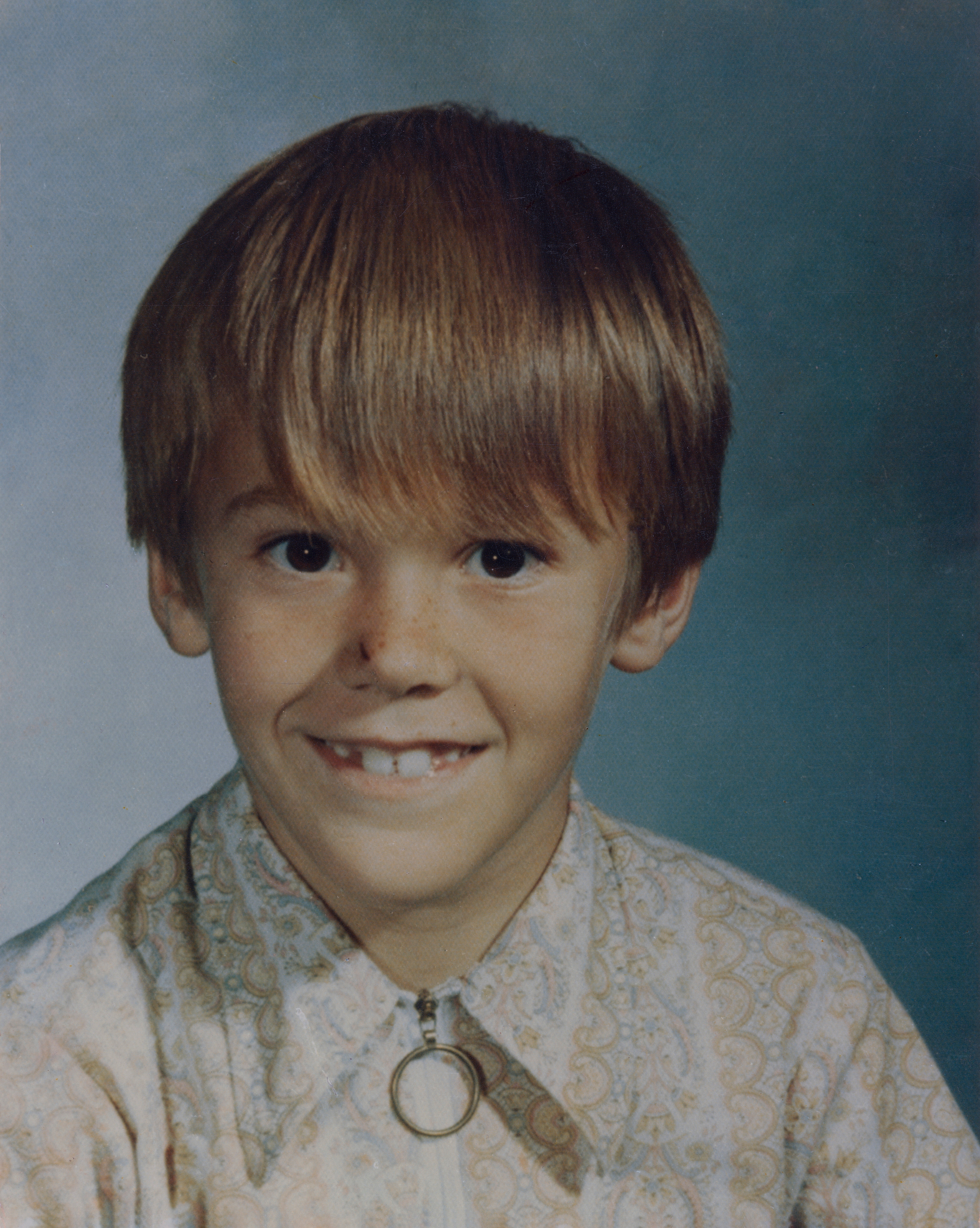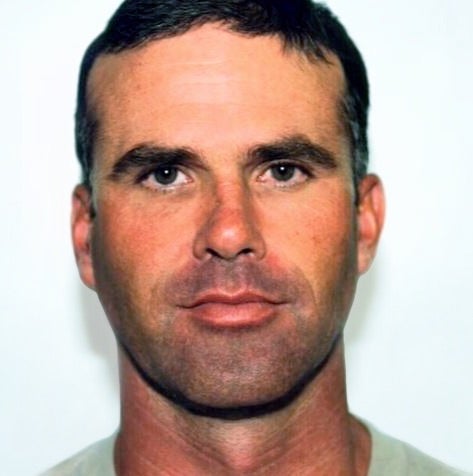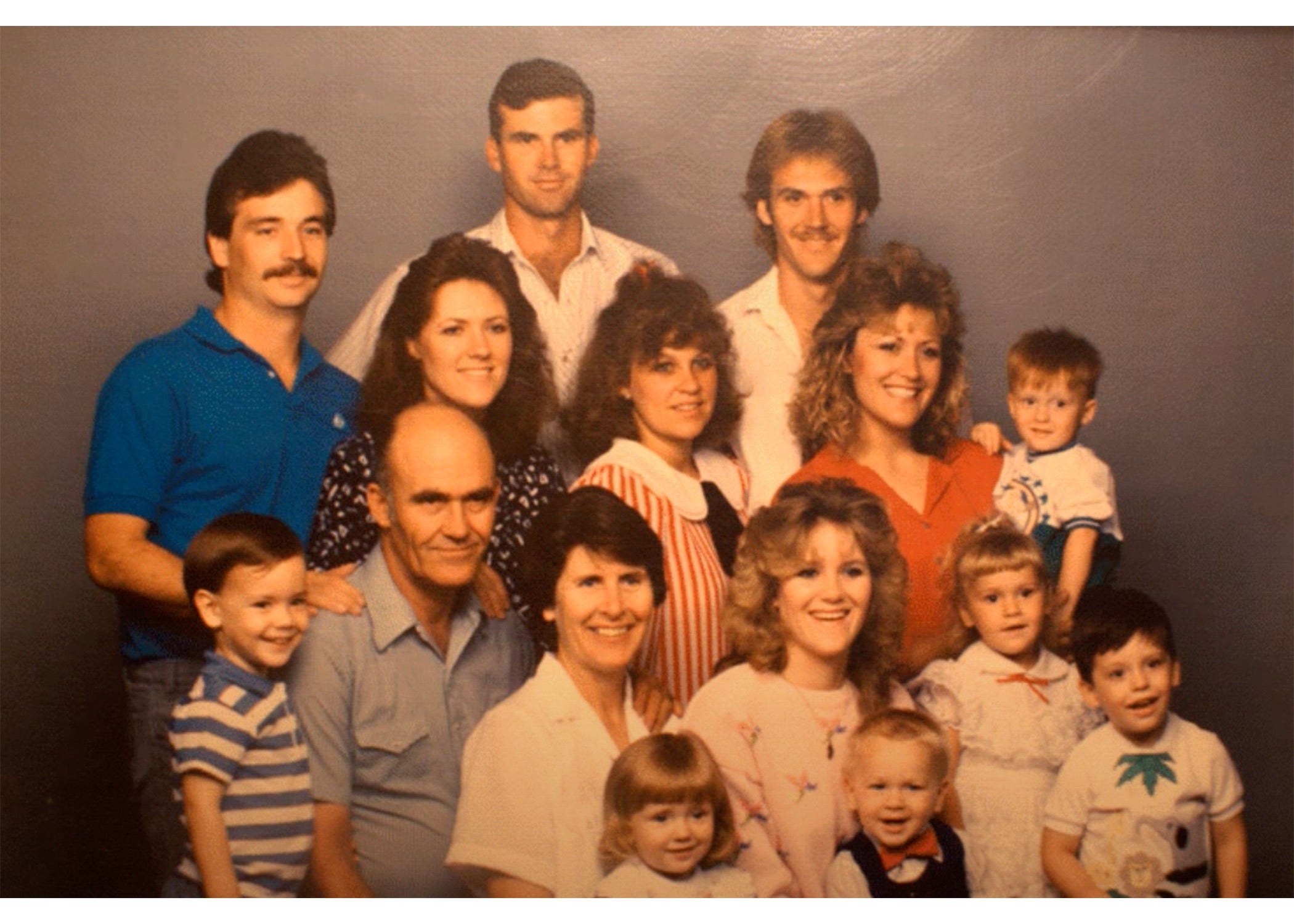Two kidnapped boys, a hero’s return, then a tragic twist: The unbelievable story of Steven Stayner
A new documentary revisits the stories of Steven Stayner, who escaped from a seven-year captivity aged 14, and of his brother Cary Stayner, who was convicted of four murders years later. Clémence Michallon speaks to Steven’s daughter Ashley Stayner and to director Jessica Dimmock


America met Steven Stayner twice. The first time, he was a seven-year-old child on a missing person poster, having disappeared without a trace on his way home from school. The second time, he was 14, freshly escaped from a seven-year captivity, his abductor’s other, five-year-old victim on his back.
Steven was abducted on 4 December 1972 just a few blocks from his house in Merced, California. His abductor, Kenneth Parnell, pretended to be collecting donations for a church and insisted on giving Steven a ride home. Instead, Parnell took Steven to his own residence. After a few days, he falsely claimed to have “gotten possession” of Steven in court. Throughout Steven’s captivity, Parnell referred to him as Dennis and passed himself off as his father. He sent him to school, albeit sporadically, where teachers and friends also knew him under that name. Parnell subjected Steven to mental, physical, and sexual abuse. His hold on Steven was such that the boy never revealed the truth about his circumstances.
In February 1980, Parnell abducted another child, five-year-old Timothy White. Sixteen days later, Steven escaped with the little boy, hitch-hiking 40 miles to a police station in Ukiah, about 200 miles from Merced. “I couldn’t see Timmy suffer,” Steven told Newsweek in 1984. “It was my do-or-die chance.”
Upon his return, Steven was interviewed on television before he even saw his parents again. Their reunion, too, happened in front of cameras. Viewers got to see the 14-year-old Steven, his facial expression lost somewhere between shyness and calm, holding a small black dog (a Manchester Terrier named Queenie given to him by his captor), approaching his parents. Steven’s father Delbert got the first hug. His mother Kay quickly followed, pulling her son into a tight embrace amid a sea of onlookers and photographers.
“What more can you ask for?” Kay asks in Captive Audience, a new Hulu documentary about the case. “He came home.”

Stories such as Steven Stayner’s remain a rarity. And nowadays, when an abduction victim escapes or is found alive, they usually reunite with their families privately. Media interviews come later, if at all. But Steven’s post-captivity life was highly publicized. Steven did multiple interviews. Television cameras followed him into his high school. The two-part miniseries I Know My First Name Is Steven, released in 1989, generated a new wave of coverage. In a harrowing twist of fate, Steven, married and the father of two children, died that same year in a hit-and-run. Ten years after his death, the Stayners were once again dragged back into the spotlight when Steven’s older brother Cary was convicted of four murders.
Captive Audience aims to tell the Stayers’ story, from Steven’s abduction to Cary’s convictions and subsequent death sentence. (He remains on death row at San Quentin Penitentiary in California.) Hulu has billed it as “the story of how a story gets told”. Steven’s daughter Ashley Stayner, now 36, is also a prominent participant, and the one member of the Stayner family who has spoken to the media following the documentary’s release.
“The way that I wanted to go about it was more to tell our side of the story than to say ‘This is where the media got it wrong,’” she tells The Independent of her involvement. “I wanted to focus more on the true aspects instead of what everybody else was focusing on.”
Captive Audience is a documentary haunted by the absence of its protagonists. Steven died in 1989, aged 24. Timothy White died of a pulmonary embolism in 2010 at the age of 35. Cary is 60 and remains in prison. Parnell was sentenced to 20 months in prison for Steven’s kidnapping and seven years for White’s. He served five, was released on parole, then was arrested in 2003 and charged with attempting to purchase a child during a sting operation. He received a life sentence the following year and died behind bars in 2008, aged 76.
On the other hand, when she first approached the series, director Jessica Dimmock knew she had ample material to draw from. I Know My First Name Is Steven, the two-part dramatization of the case released in 1989, was a big player in the true-crime programming of that era, earning nominations for a Golden Globe and four Emmys. In researching Captive Audience, she and her team realized that the film’s writer had conducted interviews with Steven, for which audio recordings still exist. The audio quality was too low to allow the tapes to be used in the series, so Dimmock asked actors Corin Nemec and Todd Eric Andrews, who respectively portrayed Steven and Cary in the movie, to read their quotes from transcripts.
The result is eerie and efficient, bringing Steven’s voice to the forefront while also highlighting his absence. Captive Audience also uses footage from Steven’s past interviews and news segments about the case, as well as clips from I Know My First Name Is Steven, often juxtaposed with videos of the corresponding real-life events.

Ashley Stayner was three years old when her father died. In the documentary, Kay recounts how Steven used to pick up his young daughter when she got moody and fly her around the apartment like she was a tiny airplane. “I thought it was just the funniest thing, you know?” Ashley says, brightening up at the memory. She then shares another recollection: “I was laying on his chest, and I could hear his heartbeat. I remember that, being able to hear that.”
Revisiting all the visual and audio material, and discussing her family’s story publicly as part of the documentary’s promotion, has been “a rollercoaster ride of emotions” for Ashley. “You look at these photos and these videos over and over again, and you analyze them, because it’s your family, and especially your dad who died when you were three,” she says. “And I just want to know more about him. But it gets really emotional for me, reliving those feelings again.”
There has been a meta dimension to her experience: participating in the documentary was a chance not only to share her own story, but to reflect on the ways in which it’s been told before. Up to this day, she has only seen I Know My First Name Is Steven once. Hearing the way her family’s story was discussed in the making of that movie was an “intriguing” experience, she says, highlighting the gaps between the relatives of lived experience and the ways in which it’s rendered on the silver screen. Captive Audience, for example, brings to light the fact that I Know My First Name Is Steven depicted Steven and his wife Jody Edmonton as having met in high school, after Jody stood up for Steven when bullies picked on him. In reality, as Edmonton and Ashley relate in Captive Audience, the pair met at the butcher shop where Steven worked, through a friend of Edmonton’s. “It sounds pretty romantic, you know, two young kids that fell in love?” Ashley says in the documentary. “And more interesting than meeting at a butcher shop, I guess.”
When Ashley points out those discrepancies, she does it without judgment, simply with a keen awareness. She likes true-crime, unapologetically so. Her foray into the genre began with The FBI Files, the docudrama series launched in 1998 on the Discovery Channel. She enjoyed the guesswork, picking apart a narrative as it was presented on the screen. She eventually started diving into bigger cases, including infamous serial killer cases. “I just kind of want to know what makes people be that way? Why did they turn out the way they did?” she says. “I myself could never imagine doing that to somebody, so you just wonder why. You just don’t understand it.”
In 1999, Ashley heard about a series of disappearances having taken place near Yosemite National Park. She was close in age to two of the missing people, 15-year-old Juli Sund and 16-year-old Silvina Pelosso. Carole Sund, 42 (Juli’s mother), and Joie Ruth Armstrong, 26, also disappeared between February and July of that year. “I was really intrigued by what was going on,” Ashley says. “It hits home whenever you’re close in age with [somebody] because you put yourself in their position. So I was very on top of the story.”
By the end of July 1999, a clear suspect emerged. Ashley’s own uncle – Steven’s older brother – Cary Stayner was accused and eventually convicted of murdering all four women and girls.

“When it came out that Uncle Cary was involved – it kind of sideswipes you and it kind of knocks you to the point that you don’t know what you feel or what you think,” she says. “People would always ask me, ‘Did you know him? How was he?’ And I would say, ‘I didn’t know him.’ And they would try, like, ‘How did you not know him? He was your uncle.’ And I’m like, ‘Well, do you know your uncle?’”
Cary was born in 1961, four years before Steven. He was 11 when Steven went missing, 18 when he returned. Captive Audience interrogates a popular narrative among followers of the case, according to which Steven’s disappearance, his return, and the overwhelming attention he received in his post-captivity life somehow prompted Cary to later commit the murders. “I think Cary Stayner wanted to be noticed,” says reporter Ted Rowlands, who interviewed Cary in 1999. “... There was something inside that really did want attention.” Michael Kroll, who worked on Cary’s defense team as a mitigation specialist (someone whose task is to paint as full a picture as possible of a defendant’s life and mindset), contends “that’s as far from the truth as you can get.” “He is fame-averse,” he adds of Cary. “He is not at all looking for attention. He never was. He always was the shrinking violet in any group. He had too many things he wanted to hide about himself.”
The possibility of Cary’s jealousy remains, made even more askew by the fact that publicity seemed to invite more torment in Steven’s life. At school, he was either nagged with personal questions or bullied about the sexual abuse he had suffered at Parnell’s hands. He didn’t receive psychological counseling. His father Del (who died in 2013) “resisted Steve getting therapy”, says Steven’s mother Kay. “I think the way you looked at things back then was that you don’t go throwing your stuff out there like that,” adds Steven’s sister Cory Stayner. Steven drank heavily, smoked “a lot of pot” (per Kay), and went through four or five “chaotic” years. Meanwhile, the media couldn’t get enough of the young boy they saw as a hero.

“Is it possible to imagine that all of this media attention could have created a bunch of resentment and jealousy [on Cary’s part]? Absolutely,” says Dimmock. “That is very possible to imagine. It’s also really easy to understand that there’s a neatness to that story – ‘this happened and [Steven] had a movie and [Cary] was jealous about the movie and then he turned out rageful.’ Sure. But maybe it has nothing to do with it and this would’ve happened no matter what.”
During our conversation, Ashley praises Dimmock’s characterization of Cary’s narrative. “I think [Dimmock] explained that part very well,” she says. “Everybody wants an answer. Nobody wants the question.”
On camera and in person, Ashley discusses her family’s experiences openly and graciously. Kay is reflective, at one point wishing she had “just fallen off the face of the earth” after Steven came home to shield him from the publicity that followed him “to the very end”.
Promoting the documentary has been fun, Ashley says, “but it’s also been a lot of sadness and nervousness and wondering how people are going to take this.” “Everybody’s been great,” she adds. “I have no complaints about the experience. It’s been something that I will forever cherish, because I don’t think I would ever have been able to talk about these things and feel these things if it wasn’t for the show. It’s bringing a sense of closure that I never really had before.”
Captive Audience is available to stream on Hulu
Bookmark popover
Removed from bookmarks